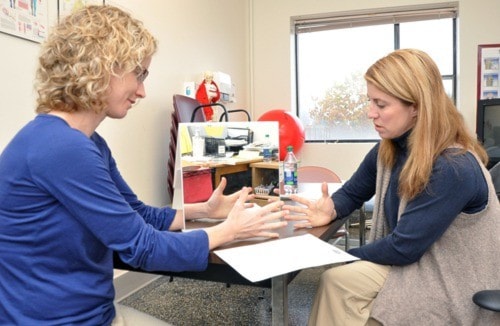If you are one of the one in five Canadians living with chronic pain, you are not alone, and there is something you can do about it.
For years, the Nanaimo Pain Clinic at Nanaimo Regional General Hospital has been improving the quality of life of local residents with an arsenal of tools that range from movement classes to meditation.
“Pain is all about the nervous system, so you need to learn to make different choices once you get into chronic pain,” said Sue Schellinck, Nanaimo pain clinic occupational therapist. “Pain tells you that there’s something dangerous going on in your body… So it’s up to people in pain to figure out what that danger is, but also to calm the nervous system down because it’s the nervous system that’s giving you the sense of pain.”
Chronic pain is defined as any persistent pain exceeding three months, and is caused by physical changes in the nervous system. It cannot be treated in the same way as acute pain, which is short term (up to three months) and usually caused by an underlying issue, such as an injury or illness.
“So often we treat with meds, but they won’t cure your nervous system. They will help alter the sensation of pain, but they also have side effects as well,” Schellinck said.
Some of the tools used for pain management can include Qi Gong (gentle yoga), mindful meditation, workshops on hygiene, nutrition and stress management, in addition to accessing a team that includes a psychologist, physiotherapist, occupational therapist, three anesthesiologists, and a rehab med doctor.
Physiotherapist Ceri Jakobsen spends much of her time at the clinic assessing movement and helping people in pain to gain more mobility in a safe manner, through pool or gym therapy.
She said the education component, which all patients at the Nanaimo pain clinic must go through before getting treatment, is one of the most important. It teaches patients how the physical changes chronic pain can affect people so that they can make the conscious, healthy choices on what treatment will be best for them.
“Everyone’s pain experience will be different,” Jakobsen said.
Along with the physical aspects of chronic pain, the pain clinic also helps treat the emotional aspect.
“There’s a lot of fear in pain,” Shellinck said. “It could be that they’re not sleeping, it could be that they can’t manage their emotions or their mood is off.”
Shellinck said many pain clinic workers must deal with the misconception that chronic pain is a mind over matter issue.
“There is no one alive that can will themselves out of chronic pain, and you can’t will yourself into chronic pain,” she said. “They also hear from health-care providers that you have to live with your pain, and that’s just not true, if you have chronic pain, yes, it may never go away, but you can not only reduce the intensity of the pain, but reduce the time in between when you have the pain.”
Nov. 4-10 is National Pain Awareness week, and to mark the occasion, there will be a display at NRGH on Monday (Nov. 5) from 10 a.m. to 2 p.m. Some of the tools used by the clinic will be on display, as well as information pamphlets.
For more information, please visit http://www.viha.ca/pain_program/.
